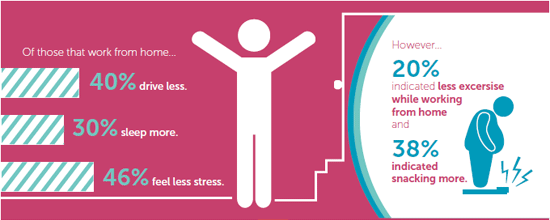Did you spend most of your work day in an office today? If you did, you’re part of the majority as 97 percent of employees spend at least some time in their employer’s office. And despite all the bad things we’re learning about sitting for long periods, half of them still feel very or extremely comfortable at their desk.
While you were sitting there, did you instant message someone just a few cubes away instead of getting up to talk to them face-to-face? I’m guilty of doing that myself, and so are 51 percent of the people we recently surveyed for the second Global Evolving Workforce Study that we first introduced in October 2011 in partnership with Intel.
There are some differences in the two studies in terms of countries and questions, but there were still some key themes touched on in both. And overall, one big takeaway from both of the studies is consistent — IT managers need to employ an individual approach to workers needs based on industry and role to enable productivity.
There’s great insight in this study for business leaders and human resource professionals, too. Everyone within an organization should focus on the following to better understand their employees’ diverse needs and provide the right environments and technology to enable them to do their best work.
- Activity-based work – Provide the right technology for the job, which may mean multiple devices.
- Seamless Access – Provide employees with seamless access to their data and applications from any device, anywhere, at any time.
- Security – Ensure not only all BYOD devices are known and secured but the user and access to information is managed and secured.
- Diverse Environments – As innovations in technology continue to advance, people have increasing flexibility to choose when and where they meet their professional obligations so employers need to provide the tools to enable them to be effective in their preferred environment. For those who don’t have the flexibility, provide a variety of workspaces to meet the task at hand.
I’m one of the many who take advantage of such diverse work environments. I’m writing this post today from my home office, but tomorrow I’ll be in an office on Dell’s main campus. The flexibility to work from home helped me focus on my fitness and lose more than 30 extra pounds last year, but 20 percent of our survey participants indicated they exercise less and 38 percent snack more when they work from home.
That disparity correlates with another study finding. When it comes to predicting whether technology will be beneficial or detrimental in the future, workers are split into two camps: Upsiders (44 percent) and Downsiders (56 percent).
The Upsiders are mostly in emerging markets, especially China, India and the United Arab Emirates. They believe that most problems can be solved with technology and they wouldn’t be happy without the latest tech. The Downsiders are nervous about the increasing role of technology in our lives and feel it separates people.
Both expect that technology will keep evolving, but that it will not fundamentally change the way in which people are working today. This study shows that while our workplace does indeed continue to evolve, we all perceive there will always be a role for humans.
Technology can’t do everything, but it will continue to serve and thrive as an enabler for improving workers’ productivity, collaboration and communication.
So tell us, how did you work today?

